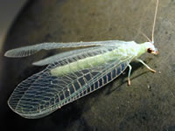What Is a Pest?



• What makes a weed grow in one area of a lawn and not another?
• Why are mice often a problem indoors in the fall?
• Why are cockroaches sometimes found in one area of a school and
not another?
These questions have more in common than you might think. One of the keys to successful pest management is an understanding of the factors that make a particular plant, animal, or insect a pest.
A pest is any animal, plant, or other organism whose biology, behavior, or location places it in direct conflict with humans. This conflict may take a variety of forms. For example:
 •
Competition for food
•
Competition for food
• Contamination of food
• Diseases transmission
• Structural damage to buildings or equipment
• Aesthetic damage to buildings, lawns, or landscapes
• General annoyance
• Phobias or general anxieties about pests
The vast majority of animals, insects, and plants do not fit into the “pest” category. Only a small fraction of the more than one million known species of insects are considered pests. Many insects play important ecological roles in nature, such as:
• Pollinating plants
• Returning organic compounds to the soil
• Serving as food for larger animals
Some Pests Threaten Human Health
Certain animal species, and even a few plants, pose a threat to human health and safety. It is important to know how to safely and effectively control these pests.
• Many flies mechanically
transmit diseases to humans by contaminating food.
• Mosquitoes can transmit a number of harmful parasites to humans.
• Proteins associated with cockroaches can trigger allergies and
asthma attacks.
• Yellowjacket stings are painful and can be life-threatening for
some individuals.
• Some spiders inflict painful bites, and the bites of some species,
such as the brown recluse, cause serious damage to human health.
• Mice contaminate food and can cause structural damage; some species
can transmit diseases.
• Certain weeds can trigger common allergies